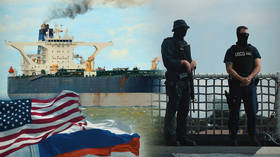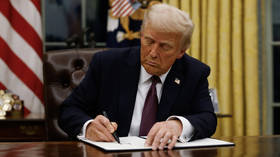Korean peninsula still divided 60 years on from war
The 60th anniversary of the beginning of the Korean War is being commemorated in South Koreal. It was a devastating conflict which claimed more than four million lives.
The anniversary comes amid renewed tensions over the sinking of a South Korean warship, widely believed to have been torpedoed by the North.
On June 25, 1950, the troops of Communist North Korea crossed the 38th parallel to overthrow the right-wing South Korea and unify the peninsula.
It was the start of a war in which more than one in ten Koreans died.
“It was essentially a civil war between two opposed ideologies, but the USSR and the US were dragged into it, though neither of them probably wanted to be,” said Pavel Leshakov from the Center of Korean Studies at Moscow State University.
Both Russia and the United States now call it The Forgotten War. Yet it was the first proxy war – a conflict fought in a foreign land – between the two Cold War rivals.
“There was a perception that if the United States did not support Korea there would be further Communist aggression around the world,” said Troy Stangarone from Korea Economic Institute.
As the strength on both sides ebbed and flowed, almost all of the country was, at one point or another, a war zone. For instance, the Americans intensively bombarded the North’s infrastructure.
“The economic consequences of the war were catastrophic,” explained Leshakov. “The North, in particular, was systematically devastated.”
As China joined on the side of the North, it was obvious that neither army could exhaust the other.
In July 1953, the North and South signed an armistice, according to which the borders were almost the same as three years earlier.
For the Soviet pilots who fought for the North, there were no parades.
Lev Ivanov shot down seven US planes in Korea.
“When you shoot down five, they are supposed to give you a Hero's Medal,” Ivanov recalled. “I was never given mine, or any acknowledgement of what we did.”
Although the war has finished, there has been no reconciliation.
South Korea has become a prosperous capitalist state. While North Korea, one of the last Communist economies, is ten times poorer, but does not appear headed for reform.
“Unfortunately the causes of the war remain to this day unresolved,” said Georgy Toloraya from the Korean program of the Russian Academy of Sciences.
Jim Hoare, a London-based freelance writer and Korea expert, agrees that the actual bringing together of the two sides is still a very complex matter.
“It’s partly because on the one side it was North Korea,” he told RT. “On the other side, it was eventually not just South Korea but UN forces as well. And so you’ve got this hangover. There’s still a sort of residual UN responsibility in Korea, which in effect became the United States for practical purposes. So North Korea believes there’s no point in reaching an agreement with the UN side, they have to reach an agreement with the US. And the United States has been very reluctant to do that because North Korea has always been trying to exclude South Korea from such an agreement.”












